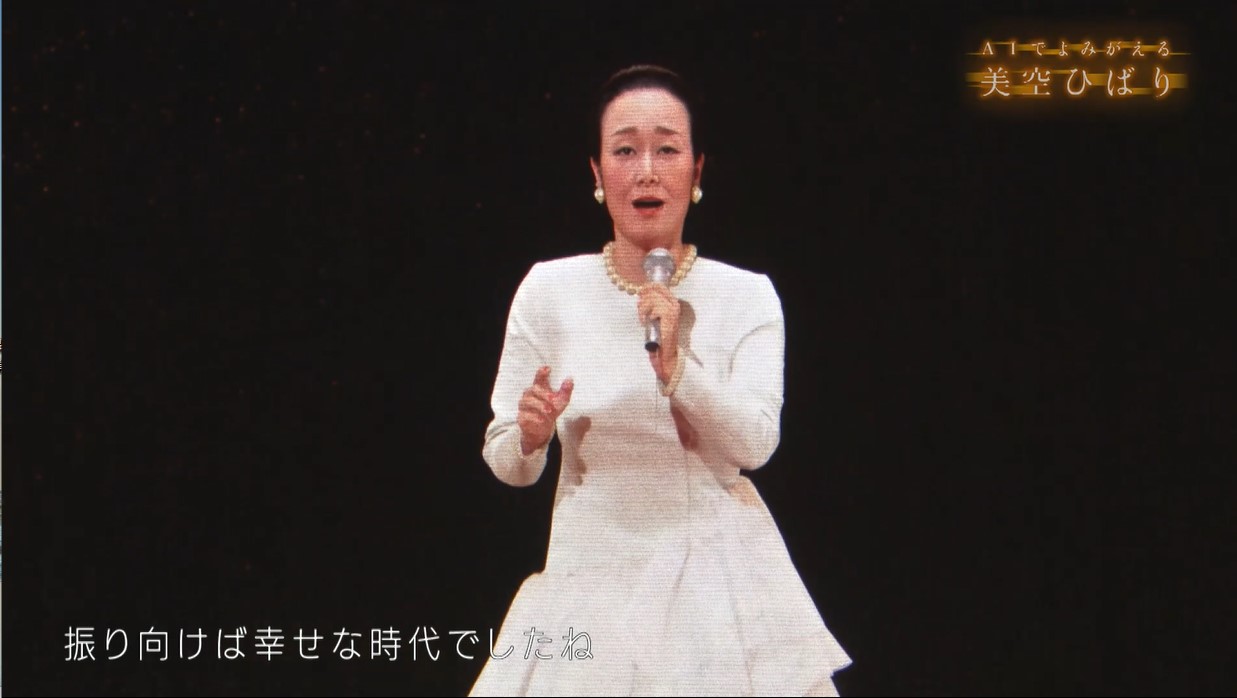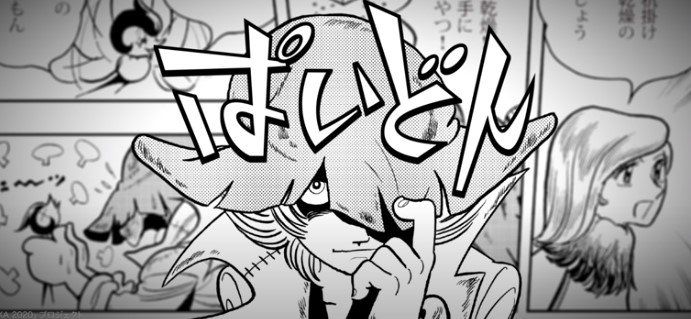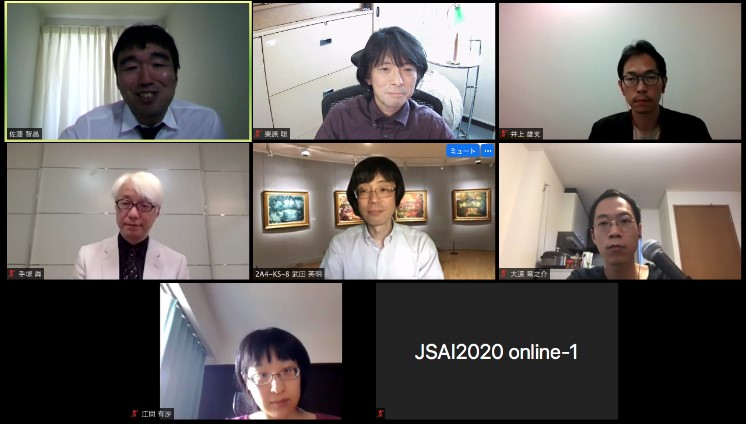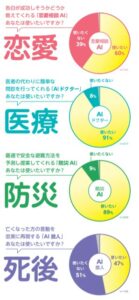Introduction
The Ethics Committee of the Japanese Society for Artificial Intelligence (JSAI) has held sessions at the annual conference on controversial topics every year. In the opening remarks, Hideaki Takeda, Chairman of the Ethics Committee, introduced past events: the establishment of ethics guidelines (2017), security technologies related to AI (2018), and freedom of AI researchers (2019).
This year, the theme is “AI creations as a technology to ‘revive’ people.” Special guests were invited from the “AI Misora Hibari (a singer)” and “AI Tezuka Osamu (a manga artist)” projects, which became hot topics in 2019 and 2020, to have a panel discussion on ethical, legal, and social issues as well as technology.
Topics from the AI Misora Hibari Project

Image by NHK special: Bringing Hibari Misora Back with AI (video can be seen here)
Yuji Inoue (Chief Director, NHK Third Production Unit Life), who produced the AI Misora Hibari project, first introduced a digest video (broadcasted on September 29, 2019) of the NHK Special “Misora Hibari revived by AI.” The AI Misora Hibari was created with the collaboration of the family and fans of Misora Hibari, and various stakeholders in response to the expectations of her fans to meet her again. After the broadcast, there were positive reactions from Twitter, such as “Wow,” “Thrilled”, and “Marvelous.” However, after she appeared in Kohaku, the Japanese singing festival, as a special guest on December 31, 2019, negative reactions, such as “Blasphemy,” “Discomfort”, and “Money” increased. Inoue points out that the pros and cons of using AI to “revive” the existence and intentions of the deceased are rooted in people’s sense of values and religions, and that the AI Misora Hibari has stressed the importance of considering the broader public opinion from now on. On the other hand, he is also of the opinion that there is a possibility that AI could make a difference in art.
Daido Ryunosuke (Development Department 1, Research & Development Division, Yamaha Corporation), who in fact synthesized Misora Hibari’s voice, gave a technical explanation including the advantages of AI synthesis. While AI can read the context and sequence of notes in a score, such as “Do-Re-Mi” and “Mi-Re-Do,” AI alone cannot grasp other things, such as the historical background and project producer’s intentions. This production intended to create an atmosphere in which Misora Hibari, who is making a comeback 30 years after she passed, will be singing as if she were speaking to each one of us. It was humans who thought about how to create a voice that follows, and AI did not create music on its own. As for the pros and cons stated by Inoue, Daido mentioned the importance of dispelling the misunderstanding by informing people that AI is not moving on its own. Thus, creating a common sense of enjoyment as entertainment, using AI technology, for both the provider and the receiver, and maintaining respect for creative activities.
Topics from the AI Tezuka Osamu Project

Image by “Tezuka 2020” Project (Manga can be read here)
From the AI Tezuka Osamu project, Macoto Tezka (Visualist and Director of Tezuka Production Co., Ltd.), who is in a unique position as a creator, a bereaved family member, and a rights holder, and Satoshi Kurihara (Keio University), who was involved in the actual technology development, introduced topics. First, a video of the project was shown, explaining how the stories and characters were created with different AI, and how the ideas were used to create the manga “Phaedo” by various stakeholders, which was published in the comic magazine Morning.
Manga, a uniquely Japanese form of expression, is complex and multilayered in terms of the amount of information it contains. As a creator, Tezka said he was interested in how close AI creations could be to the real person. In response to Kurihara’s question about the extent to which AI can support human beings with their creative activities, Tezka said that the key to both the characters and storyline is whether AI can create essential ideas. For example, in “Black Jack,” one of the famous manga by Tezuka Osamu, three elements of the character are combined: “doctor”, “un-doctorial dress and attitude”, and “compassionate.” This was the starting point for the development of a variety of stories. Tezka said that, fortunately, AI suggested the essential elements to both characters and stories in this project.
Kurihara also asked how an AI project could be viewed as a family member or a rights holder for Tezuka Osamu’s work. Tezka replied that his efforts were not AI-specific. He has been involved in creative activities related to the works and biographies of Tezuka Osamu for a long time, and it is a great pleasure to see people revisit his works. Therefore, the right holders need to promote new attempts while supervising and managing it so that their image is not unfairly damaged.
Panel Discussion

Panelists: Tomoaki Sato, Satoshi Kurihara, Yuji Inoue (top left to right)
Macoto Tezka, Hideaki Takeda, Ryunosuke Daido (middle row left to right)
Moderator: Arisa Ema (bottom row left)
Tomoaki Sato (Aoyama Gakuin University) and Hideaki Takeda (National Institute of Informatics), both from the Ethics Committee of the JSAI, participated in a panel discussion with four presenters. The panel discussed topics such as how to obtain consent, how to consider the way society perceives the technologies, and how to present and design technologies. The moderator was Arisa Ema (University of Tokyo), also from the Ethics Committee.
How to Obtain Consent
Sato reaffirmed that while both projects are labeled as AI, the fact is that there is a lot of human contribution involved on how to select data, compose it, and direct it. He also pointed out that copyright handling will become a legal issue in the future. Further, he commented that the project will be a good example of how to proceed with similar technologies without blaspheming the deceased and dishonoring their families.
However, it should be noted that both the projects are cases in which the representative singer and manga artist in Japan, and the bereaved families and rights holders were cooperative with the project. When these conditions were not met, a viewer asked how to obtain the consent of the individual or rights holder and what to do if the consent could not be obtained for some reason. The panel discussed that there may be situations where the consent of the bereaved family is not necessary, but if it can be obtained easily, it should be taken as a courtesy, and a good thing can be created by having the bereaved family involved.
Consideration of the way Society Perceive Technologies
Takeda spoke from a researcher’s perspective that the disappointment that AI alone could not do much for an engineer is a scary reminder of how the second boom ended. He also raised the issue that both projects were overly concerned with social acceptance by bereaved families and society. In the past, techniques such as photography had changed the relationship between the deceased and the living. He pointed out that it was important to discuss the premise that there would be an influence of technologies. He also raised the issue of whether only the thoughts of the deceased and the bereaved should always be given priority. The discussion moved on to the topic of highly public information, and whether that could be recorded as world heritage, and that data should be archived even if there was a disagreement among the bereaved families.
In this regard, it was pointed out that the way people consider human dignity may not be universal, and that a sense of space and time between the recipient and the “deceased person” is important. For example, Kurihara presented a picture of Dali created by the AI of the Dali Museum and pointed out that it is far from space and time for the Japanese, and that discussions on dignity and other issues may be unlikely to occur in Japan regarding this topic. Also, in the AI Misora Hibari project, Inoue introduced the voice of a director of the record company, who was in charge of Misora Hibari saying, “I wouldn’t have forgiven you for creating AI Misora Hibari if her death was 20 years ago, but since it has been 30 years, it would be okay and I will get back you.”
The Way to Present and Design Technology
There are similar issues with presenting and designing technologies. It is highly possible that the AI Misora Hibari project was regarded as “blasphemous” because it used the strong word “revive.” We should be aware that each person has a variety of perceptions. A viewer commented that meeting an admired person would increase their sense of loss because they are loyal fans. Daido responded that not only are there concerns that the technology could be misused, but that even the same videos could be perceived differently by different people. While some might be happy, others might be hurt due to the presentation of the same AI technology. Therefore, it would be necessary to consider what is right and good in a long-term, fixed-point manner.
AI Misora Hibari and AI Tezuka Osamu projects have expanded beyond the laboratory and to the real world, reaching people with diverse values and knowledge. While technology, law, and people’s values and emotions are all still instable, the right answer cannot be given only by this panel. However, in this session, the panelists shared the view that AI did not voluntarily reproduce Hibari Misora and Osamu Tezuka, but was realized through the participation of a variety of stakeholders; in other words, this was a form of human expression. On the other hand, this process can be difficult for the general public and consumers to understand. Therefore, Tezka pointed out that to explain that AI does not replicate a person, it is important to note that future similar projects must clearly state that it is a creative work using AI as a tool.
For Future Discussions
 Technically, it will become possible to “revive”’ people close to us. The left image is an excerpt from “AI map: from Everyone, for Everyone” created by the National Museum of Emerging Science and Innovation (Miraikan) with the cooperation of the JSAI, questions were asked on whether people want to use “AI deceased that faithfully reproduces the words and deeds of the deceased.” Compared to the case of AI lovers (red in the left image: 60% answered that they want to use), medical care (blue: 91% people want to use), and disaster prevention (green: 89% people want to use), reviving people (purple: 47% people want to use) people’s response are divided into pros and cons. In this situation, the question that must be debated now is whether the person should decide the matter before death or leave it to the bereaved family.
Technically, it will become possible to “revive”’ people close to us. The left image is an excerpt from “AI map: from Everyone, for Everyone” created by the National Museum of Emerging Science and Innovation (Miraikan) with the cooperation of the JSAI, questions were asked on whether people want to use “AI deceased that faithfully reproduces the words and deeds of the deceased.” Compared to the case of AI lovers (red in the left image: 60% answered that they want to use), medical care (blue: 91% people want to use), and disaster prevention (green: 89% people want to use), reviving people (purple: 47% people want to use) people’s response are divided into pros and cons. In this situation, the question that must be debated now is whether the person should decide the matter before death or leave it to the bereaved family.
We live in an era where people and AI work together to create the future. To do this, it is necessary to consider how to interpret and express the technology, not only from the viewpoint of the treatment and dignity of individual (deceased) data but also as a tool to support creativity based on various examples. This session is a record of the questions and discussions in 2020. We hope that this will be an opportunity for us all to continuously think about this subject together with various other people.
Written by Arisa Ema

